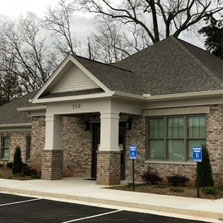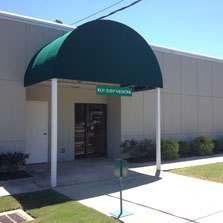Pediatric Sleep Apnea (OSAS)
Pediatric Sleep Apnea is not the same as Adult Sleep Apnea! Children with sleep apnea almost never “stop breathing” and are rarely sleepy during the day. In fact, often times the only sign of pediatric sleep apnea is snoring on most nights.
Pediatric obstructive sleep apnea syndrome (OSAS) is a very serious and underdiagnosed condition affecting about 3% of all children. About one of every five children who snore has OSAS. In overweight children, the prevalence of OSAS is even higher. Unfortunately, the majority of these kids remain undiagnosed!
What can happen to kids with untreated OSAS?
 Pediatric OSAS has been linked to:
Pediatric OSAS has been linked to:
- ADHD
- Obesity
- Lower IQ
- Learning Problems
- Diabetes
- High Blood Pressure
- Poor Quality of Life
Pediatric OSAS is treatable. Treatment has been shown to reverse many of these issues.
Which children should be screened for OSAS?
For over a decade it has been recommended that all primary care doctors ask children about snoring on every well-child visit. The signs and symptoms of OSAS include inattention, hyperactivity, morning headaches, gasping during sleep, and they often sleep with their mouths open and their necks extended (to get more air during sleep). Often, the inattention and hyperactivity are confused with ADHD. It is also strongly recommended by pediatric sleep experts that any child undergoing tonsillectomy and/or adenoidectomy has a sleep study prior to surgery. Without a sleep study, a child with undiagnosed sleep apnea may have a more difficult post-operative recovery and higher risk of complications due to a more unstable airway. In addition, it has been speculated by experts in our field of Sleep Medicine that up to 30% of children sent to ENT for tonsillectomy don’t actually need the surgery!
If your child snores on most nights, make an appointment with Dr. Roy!
References:
- www.entnet.org/HealthInformation/Could-Child-Have-Sleep-Apnea.cfm
- PLoS Med 3(8): e301, 2006
- Otolaryngol Head Neck Surg. 2008 Mar;138(3):265-273
- Arch Dis Child 1993;68:360-66
- www.enttoday.org/details/article/1309323/Sleep_Studies_Clarified_New_guidelines_amplify_the_role _of_PSG_for_children_with.html
- pediatrics.aappublications.org/content/130/3/576









KEEP IN TOUCH WITH US